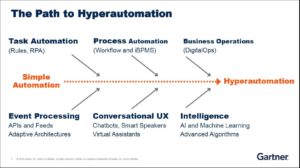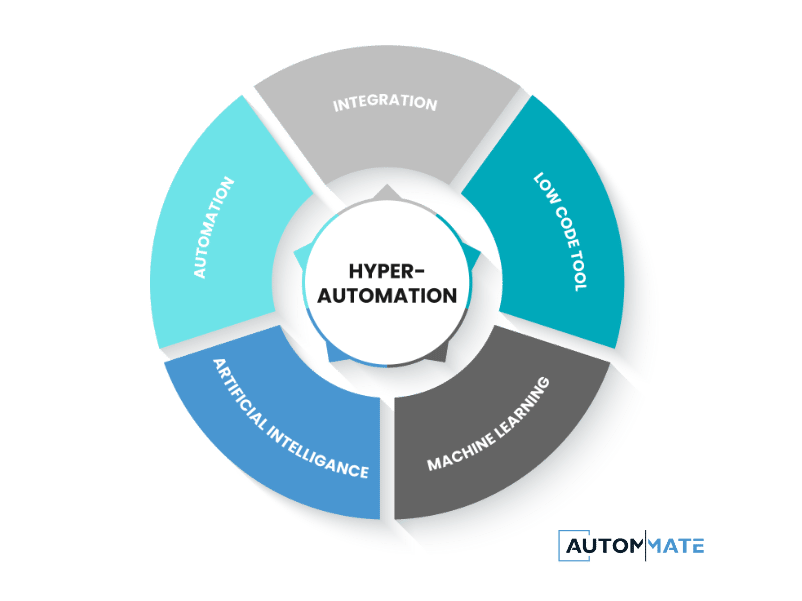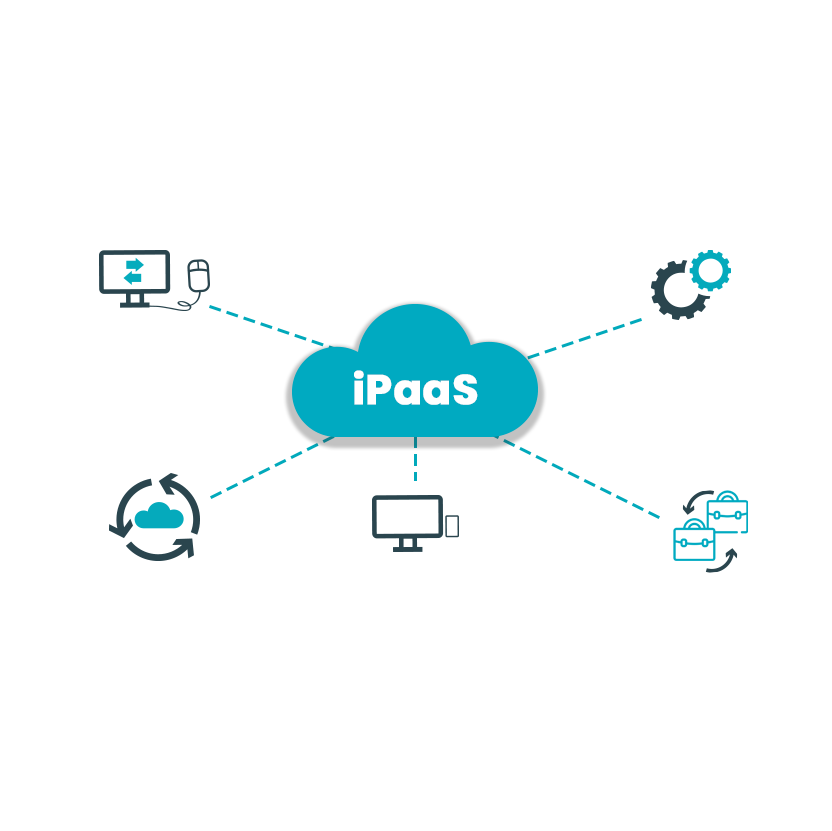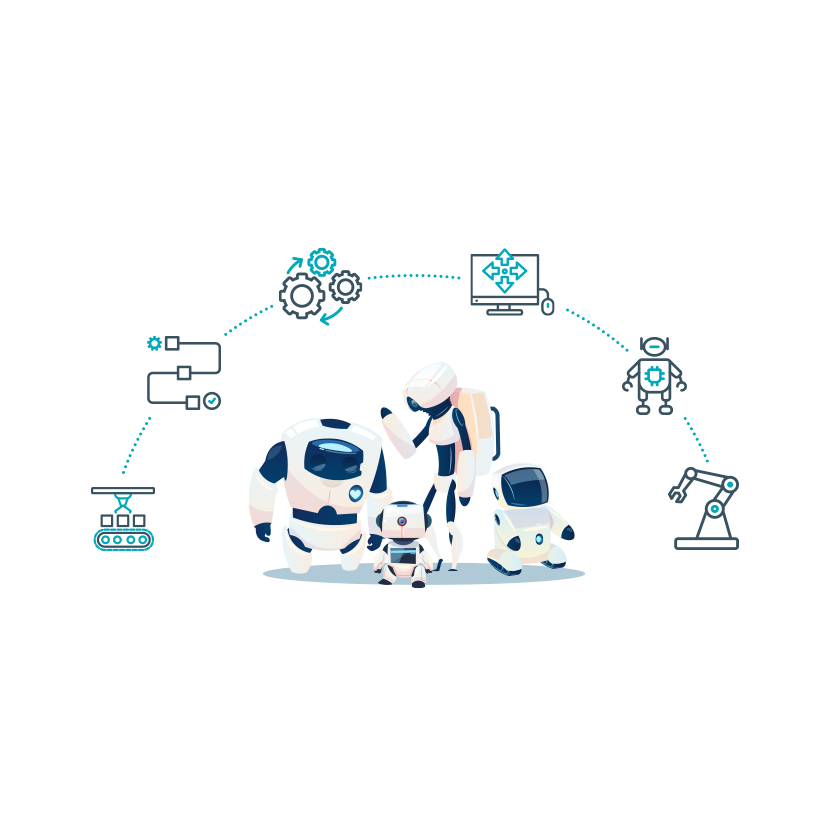Hyperautomation is undoubtedly one of the most groundbreaking technology trends of the 2020s. It may sound futuristic and grand, but it’s the end-product of technologies that are changing the workplace. So, what is hyperautomation? Due to its end-to-end automation model, hyperautomation is a strategic technological trend that has been widely adopted by many enterprises. With its methodology, firms may integrate and optimise processes at bigger scales to enhance performance and guarantee the highest level of efficiency.
According to Gartner’s studies, 69 per cent of boards of directors and more than 50 per cent of CEOs are calling for accelerated growth and operational excellence in 2021.
A key step toward attaining both is hyperautomation. Read on to learn more about hyperautomation.
What is Hyperautomation?
Let’s start with the definition of hyperautomation. Hyperautomation is defined as “the combination of multiple machine learning, packaged software & automation tools to deliver work” and “deals with the application of advanced technologies, including AI and machine learning to increasingly automate processes & augment humans,” according to Gartner’s report on the Top 10 Strategic Technology Trends for 2020.
Hyperautomation is the practice of completely automating a business process through the application of a number of cutting-edge technologies. This is accomplished mainly through the use of cutting-edge technologies, including intelligent business process management (IBPM), machine learning, robotic process automation (RPA), and artificial intelligence (AI). As a result, hyperautomation makes use of the synergy of capabilities from all of these technologies rather than relying solely on one technology, such as AI, for automation. Successful hyperautomation plans enhance the capabilities of the current tech stack and increase the scope of automation by incorporating new tools & apps into it.
The demand for high-performing fusion teams is rising as hyperautomation projects continue to expand. Initiatives towards hyperautomation have expanded, and funding is unabated. Over 80% of firms continuously self-report increasing or maintaining investment in hyperautomation initiatives.
Hyperautomation vs RPA—What’s the Difference?
Robotic process automation (RPA) is the use of robots that have been programmed to automate repetitive, predictable, and routine processes through interactions that are intended to resemble human behaviour. Prior to RPA, automation was driven by complicated coding. RPA has made robot execution simpler nowadays. RPA is limited to automating repetitive and preset activities, though. Cross-functional cooperation is required to implement hyper-automation. By enabling intelligent and adaptable processes that suggest the next course of action rather than repeating the same tasks until instructed to stop, hyper-automation elevates RPA to a new level.
Hyperautomation uses new technology, such as machine learning, in low-level operations to leverage data to find patterns, learn, and add another layer of complexity beyond simple rule-based procedures.
The primary difference between RPA & hyperautomation is that. In contrast, RPA primarily focuses on robotically replacing and automating straightforward business operations. Hyperautomation is a more comprehensive transformation of how an organisation runs that elevates RPA to a higher level.
The Future of Hyperautomation
Automation is used in conjunction with emerging technology like AI to handle more complicated issues and streamline company procedures. Through all of this, Hyperautomation can involve humans in the process, allowing technology and people to work together rather than side by side. People who accept change will be far ahead of those who don’t as a result of hyperautomation, with the latter group falling far behind. For those with vision, hyperautomation drive will be engaged at full speed.

Increasing cooperation to enable humans to analyse big data & apply insights to their businesses as the primary decision-makers. Wondering about hyperautomation use cases? A call centre can automate an agent’s mouse-click process to launch an application that gathers data from sources such as RPA and AI.
What about the future of hyperautomation? Instead of automating individual operations, digital native businesses will begin to understand how to automate end-to-end workflows. Consider human resources. You’ll be able to standardise best practices, enhance productivity, and reduce blockages if you can digitise the entire process, from selecting applicants to recruiting, employee training and development, mentorship, churn prevention, and more.
It is also feasible that digital twins will continue to emerge: the virtual representation of assets, systems, and processes in order to improve performance and dependability, increase productivity and minimise risk. Healthcare executives, for instance, can determine the effects of adjusting staffing levels or rearranging a ward’s layout by conducting simulations throughout the entire institution. They can then determine whether the impact of that change in one department will also affect the other without having a direct visible impact on either patients or employees.
We live in a technology-driven world that is full of both opportunities and challenges. How will you overcome the obstacles in order to see the promises fulfilled and fully realise the benefits of automation?
Hyperautomate Easily with Autom Mate
With Autom Mate, you can build automated flows with the apps and patterns you require using our straightforward drag-and-drop interface. View the impact of Autom Mate, speak with one of our experts, or provide a live demo to begin picturing the future of your work. Autom Mate took automation to the next level with hyperautomation and picked the best features to offer its users an ever-growing and evolving automation and integration platform. In order to assist enterprises in achieving their objectives regardless of industry-specific requirements, it provides Digitization Framework, Robotic Process Automation, Enterprise Integration Platform (eiPaaS), and AutoML solutions.
Let’s talk about how Autom Mate takes automation to the next level
Collaborative
Integration across all channels enables cooperative event and issue management.
Autom Mate Market Place
Hundreds of automation and integration bots are ready to use, created by experts and users.
Works 24/7, in Real-Time
Real-time notifications with communication applications
iPaaS
Integration bots are here for your use. The integration of applications into an organisation can be standardised thanks to easy iPaaS infrastructure.
AI & ML
On-the-fly machine learning methods. Drag and drop machine learning models into your automation workflows.
Drag & Drop Interface
No code / Low Code platform for integration, automation and AI needs.
In short, Autom Mate provides hyperautomation for everyone. Contact an expert to see how you can leverage Autom Mate.





